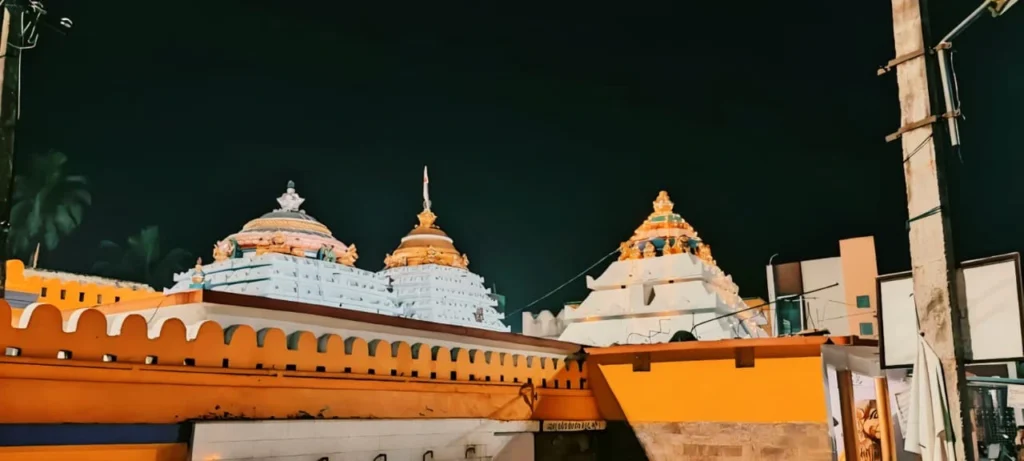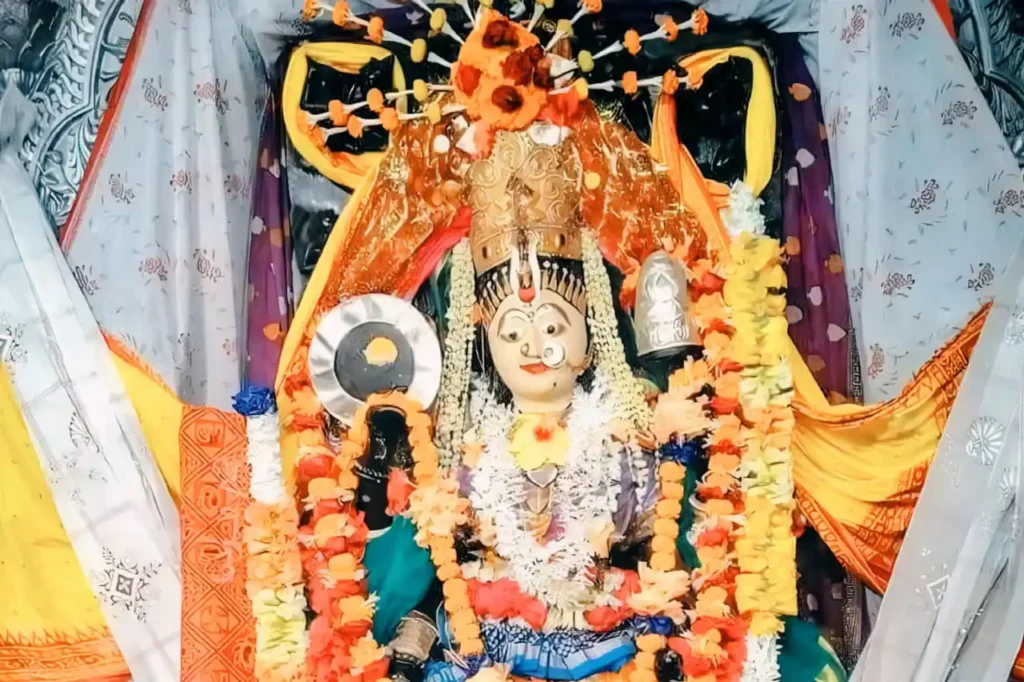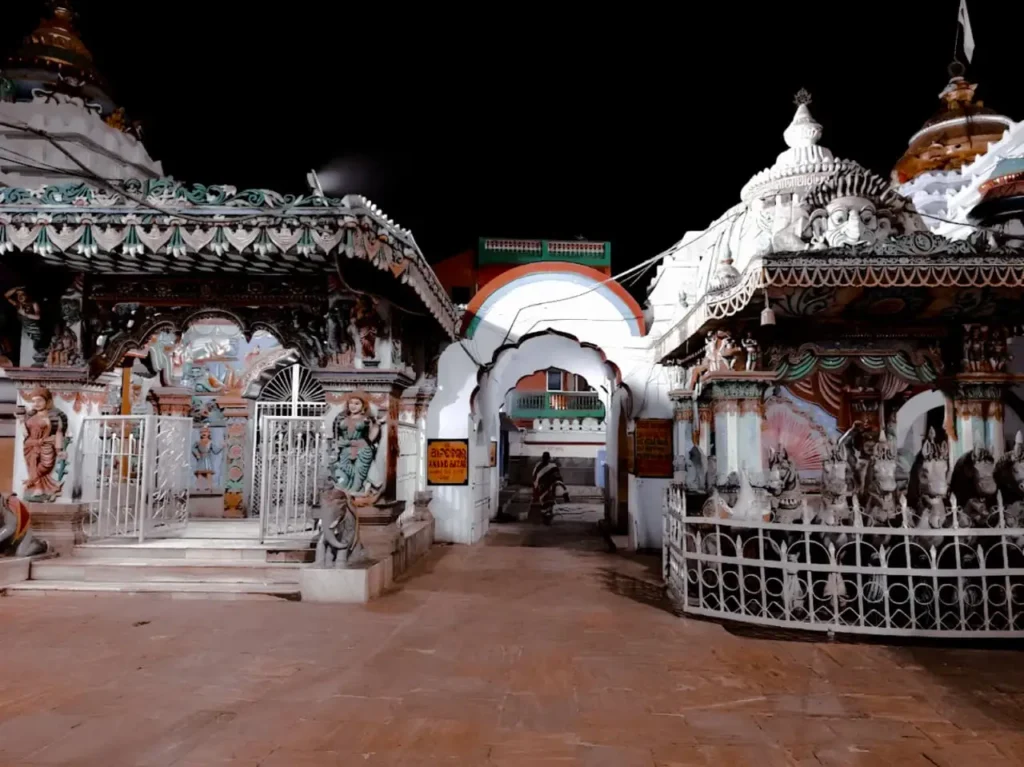
Table of Contents
Introduction: Why Kakatpur Maa Mangala is Revered in Odisha
Indeed, Kakatpur Maa Mangala is not just a deity; she is the guardian, guide, and symbol of feminine power for countless devotees across Odisha. Located in the Puri district, her temple in Kakatpur is one of the most sacred Shaktipithas in the state. Moreover, devotees know her especially for guiding the selection of Daru (sacred neem wood) during the Nabakalebar of Lord Jagannath, a ritual of cosmic renewal that occurs every 12 to 19 years.
First, explore the myth, magic, and magnificence of Maa Mangala of Kakatpur. Then, discover how her spiritual aura continues to inspire thousands of pilgrims.The Temple of Maa Mangala: A Sacred Seat of Shakti

Located on the banks of the River Prachi, the Kakatpur Maa Mangala Temple is more than 500 years old. Devotees believe that Kakatpur Maa Mangala Temple is a powerful Shaktipitha where Maa Mangala manifests as a fierce yet compassionate form of Goddess Durga.
Traditionally, the temple showcases classic Odia architecture with a Jagamohan (assembly hall) and a Garbhagriha (sanctum sanctorum). Inside, the priests adorn the idol of Maa Mangala with red attire and gold ornaments and then place her in the sanctum. , where she radiates divine energy that captivates every devotee.The Story Behind Maa Mangala’s Divine Role in Nabakalebar
According to legend, on the auspicious day of Sri Ram Navami, Maa Mangala visited Lord Jagannath in Puri and humbly requested the right to guide the selection of Daru, the holy wood used to carve new idols during Nabakalebar. Initially, Lord Jagannath hesitated and reminded her that He had already assigned the duty to the Daita families, the descendants of Biswabasu.
But Maa Mangala, in her gentle wisdom, said:
“In time, the successors may lose focus. You may be defamed. Let them continue, but under my divine direction.”
Lord Jagannath agreed. Since then, Maa Mangala plays an integral role during Nabakalebar, guiding the Daitas toward the exact trees marked by divine signs.The Lost Bracelet & Ratnachudi Maahal – A Divine Sign

That night, Lord Jagannath appeared in the king’s dream and revealed the truth. As a result, the king ordered the farmer’s release, and thereafter, he declared the land tax-free—forever known as Ratnachudi Maahal, a sacred gift from the Goddess herself.
To this day, the stone on which Maa Mangala sat before entering her temple can be found in the southern part of the Jagamohan. It is believed that the stone is slowly wearing down due to the divine energy absorbed from Her presence.Divine Iconography of Maa Mangala – Symbolism, Style, and Sacred Presence
Rituals & Devotion: The Zhamu Yatra & Agyanmala
Every year during the Chaitra month, devotees mark the last Tuesday with the grand celebration of Zhamu Yatra, a ritual fire-walking festival that honors the Goddess’s power. Devotees from all over Odisha gather to witness and participate in this extraordinary show of faith.
During Nabakalebar, Daita servitors from Puri arrive with the Agyanmala (garland of permission) from Lord Jagannath. Then, they offer it to Maa Mangala at Kakatpur, seeking divine guidance to locate the exact direction and site of the sacred Neem tree for the new idols.People Always Ask:
1. What is Kakatpur Maa Mangala famous for?
2. Where is Maa Mangala Temple located?
3. What is the connection between Maa Mangala and Lord Jagannath?
4. What is Zhamu Yatra?
5. What is Ratnachudi Maahal?
Why You Should Visit Maa Mangala Temple
Final Thoughts: Let the Divine Mother Guide You
Maa Mangala represents more than a temple deity — she embodies protection, wisdom, and power. Her stories weave together faith and folklore, and her temple actively symbolizes Odisha’s Shakti tradition.
So, when you explore the spiritual circuits of India, visit Kakatpur Maa Mangala Temple. Who knows? She might just whisper the direction your life should follow.✨ Next, share this blog with friends and family to help spread her divine story.
✨ Finally, if you’ve visited Kakatpur, share your experience in the comments—we’d love to hear from you!

Pingback: Khirachora Gopinath Temple Balasore – History & Significance
Pingback: Chhau Dance of Mayurbhanj: Odisha’s Timeless Martial Art Form